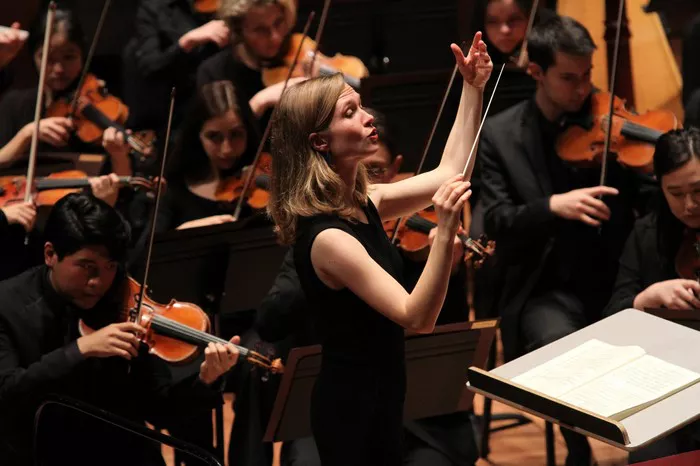Western art music encompasses a vast array of styles and periods. Yet, it’s often lumped under the term “classical music.” In the meanwhile, the term “classical music” is widely used to describe Western art music, spanning centuries from the medieval period to the contemporary era. This term, however, can be misleading and oversimplified. This article examines why all Western art music is sometimes referred to as classical music, shedding light on the evolution of the term and its implications in today’s musical landscape.
I. Historical Context
The Classical Period
The Classical period, spanning from approximately 1750 to 1820, is a specific era in Western music history. It includes the works of composers like Mozart, Haydn, and early Beethoven. The term “classical” originally referred to this period, which was characterized by clarity, balance, and formality.
Pre-Classical and Post-Classical Periods
Before the Classical period, there were the Medieval (500-1400), Renaissance (1400-1600), and Baroque (1600-1750) periods. After the Classical period came the Romantic (1820-1900) and Modern (1900-present) periods. Each era had distinct styles and characteristics, but over time, the music from these periods has also been grouped under the term “classical music.”
II. The Evolution of the Term “Classical Music”
Broadening the Scope
The term “classical music” began to broaden in scope during the 19th century. Musicologists and critics started using it to refer not just to the Classical period but to all Western art music. This was partly due to the increasing complexity and variety of musical styles emerging at the time.
Simplification for the Masses
For the general public, “classical music” became a convenient term to describe sophisticated and cultured music as opposed to popular or folk music. This simplification made it easier for people to categorize music, even though it glossed over the rich diversity of styles and periods within Western art music.
III. Cultural Perceptions
High Art vs. Popular Music
Classical music is often perceived as high art, associated with sophistication, education, and refinement. This perception contrasts with popular music, which is seen as more accessible and tied to contemporary culture. The term “classical music” thus carries cultural weight, signifying a certain level of prestige and historical importance.
Western Dominance
The dominance of Western culture in the global music scene has also played a role. Western art music, with its extensive written tradition and institutional support, has been widely disseminated and taught worldwide. As a result, the term “classical music” has become synonymous with Western art music in many contexts.
IV. Practical Considerations
Educational Systems
In educational systems, especially in the Western world, music curricula often use the term “classical music” to cover a wide range of historical periods and styles. This helps streamline teaching and provides a clear framework for students to understand the development of Western music.
Marketing and Media
The music industry and media also play a role in perpetuating the use of “classical music” as a catch-all term. It simplifies marketing and categorization for record labels, streaming services, and radio stations, making it easier for consumers to find and explore this genre.
V. Subgenres within Classical Music
Medieval and Renaissance
Early music includes the Medieval and Renaissance periods. Medieval music features Gregorian chant and early polyphony, while Renaissance music is known for its rich harmonies and intricate vocal works.
Baroque Music
The Baroque period is marked by its grandeur and ornamentation. Composers like Bach, Handel, and Vivaldi wrote complex, expressive works that laid the foundation for much of Western music theory and practice.
Classical Period
As previously mentioned, the Classical period focused on clarity and form, producing enduring works by composers like Mozart and Haydn.
Romantic Music
Romantic music is characterized by its emotional intensity and individualism. Composers like Chopin, Schumann, and Wagner expanded the boundaries of musical expression.
Modern and Contemporary Music
The 20th and 21st centuries have seen a wide variety of styles, from the atonality of Schoenberg to the minimalism of Philip Glass. Contemporary classical music continues to evolve, incorporating new technologies and global influences.
VI. The Misconceptions and Confusion
Overgeneralization
Referring to all Western art music as “classical” can lead to overgeneralization. This overlooks the unique characteristics and contributions of each period and composer. It can also create confusion for those trying to understand the differences between styles and eras.
Cultural Bias
This broad use of the term “classical music” reflects a cultural bias towards Western music traditions. It can marginalize non-Western musical traditions and diminish the rich diversity of global music.
VII. Efforts to Clarify and Educate
Music Education Initiatives
Music education initiatives aim to clarify the distinctions between different periods and styles within Western art music. By providing more nuanced and detailed information, educators hope to foster a deeper understanding and appreciation of the genre’s complexity.
Public Awareness Campaigns
Public awareness campaigns and educational programs in the media also strive to demystify classical music. They highlight the unique qualities of various periods and composers, making the genre more accessible and engaging to broader audiences.
See Also: A Deep Dive into the Spiritual Essence of Classical Music
VIII. Conclusion
The term “classical music” has evolved to encompass all Western art music, from the Medieval period to the present day. This broad usage simplifies categorization and reflects cultural perceptions, but it also risks overgeneralization and cultural bias. By understanding the historical context, cultural implications, and practical considerations behind this terminology, we can appreciate the rich diversity of Western art music and promote a more informed and inclusive approach to its study and enjoyment.

